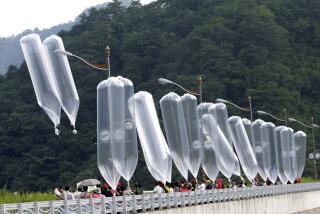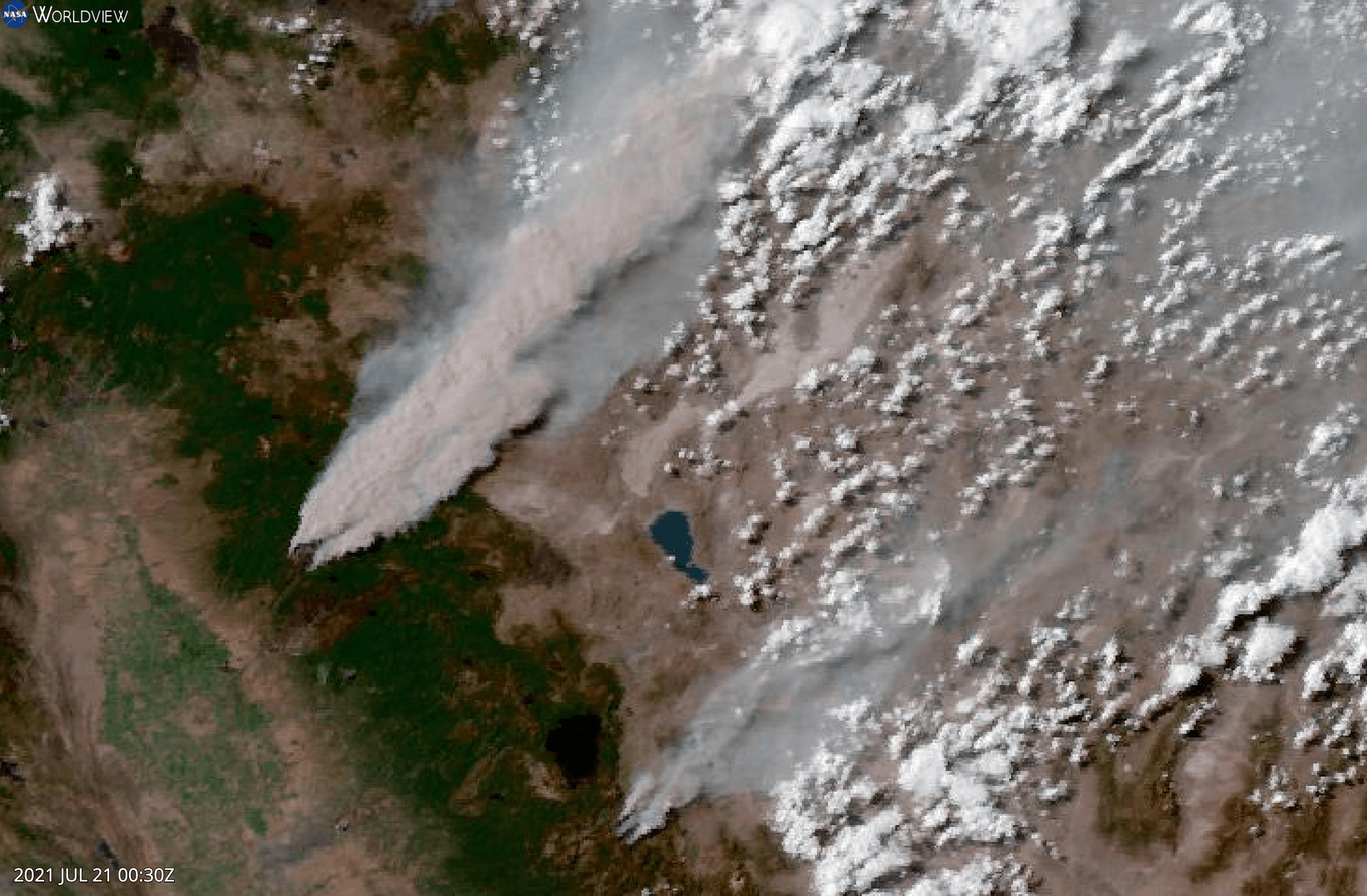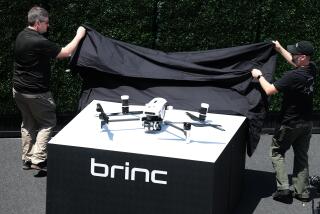Here’s why your internet may be delivered by a drone someday soon
As the pilotless flying wing came in for a landing, winds suddenly picked up. Facebook Inc.’s Aquila drone — powered by the sun and wider than a Boeing 737 jetliner — struggled to adjust. Just before landing, part of the right wing broke off.
That inaugural 2016 flight proved an inauspicious beginning for Facebook’s foray into internet-beaming drones, but perhaps a fitting one. Two years later, the company pulled the plug on developing its own aircraft.
Since then, companies such as Amazon.com Inc. and SpaceX have placed big bets on providing internet service around the world with thousands of small satellites. SpaceX’s plans are set to jump forward Thursday with a launch of 60 internet-beaming satellites.
But don’t count out solar-powered, high-altitude drones — or giant balloons.
Advances in solar-cell and battery technology have made those technologies more feasible. Last month, Japanese telecommunications giant SoftBank Corp. said it would partner with Simi Valley drone maker AeroVironment Inc. to build a drone capable of flying to the stratosphere, hovering around an area for months and serving as a floating cell tower to beam internet to users on Earth. Airbus and Boeing Co. are also working on their own versions of high-flying, solar-powered drones.
Driving these and other projects is the promise of 5G connectivity. That fifth-generation cellular technology, which is just rolling out, will increase download speeds dramatically. And proponents say its reliability should enable services such as self-driving cars and remote medicine.
Connecting remote users would enhance the market potential even more, said John Robbins, an associate professor of aeronautical science and coordinator of the unmanned aerial systems program at Embry-Riddle Aeronautical University.
“Increasing that footprint where people are able to access that information is extremely important,” he said. “This is one way to do it.”
The attraction of drones and balloons is they could cost much less than building cell towers in remote areas. And their location, closer to Earth than satellites, could offer faster response times, said Tim Farrar, president of TMF Associates, a telecommunications consulting and research firm in Menlo Park.
Industry experts estimate only 10% to 20% of the Earth’s land area is covered by terrestrial cell towers. Mobile operators are interested in providing continuous service across the globe, particularly in light of the coverage needed for advanced, 5G applications. Drones could also be used in emergency situations in which cell towers have been destroyed or taken offline.
“If you could broadcast internet to remote areas for extended periods of time, that would be a very desirable capability to have,” said Arthur Holland Michel, co-director of the Center for the Study of the Drone at Bard College in New York. “You could connect a lot of users, bolster your bottom line pretty significantly. The problem is that it is a phenomenally complex technical challenge.”
Over the years, several companies have wrestled with that challenge of keeping a pilotless plane aloft for long periods.
In the 1990s, NASA formed an alliance with firms such as AeroVironment, Aurora Flight Sciences (which was acquired by Boeing in 2017), Mojave-based Scaled Composites (bought by Northrop Grumman Corp. in 2007) and San Diego-based General Atomics to develop technology that could be used in drones that carried out science and environmental missions at high altitudes.
The result was several solar/electric-powered prototypes, including a modification to a drone AeroVironment had initially built for a classified program that became the Pathfinder Plus. On a test flight, that plane reached an altitude of 80,201 feet. The company developed other high-flying drone prototypes, such as the Helios, which reached 96,863 feet during a 2001 test.
At the time, however, the limitations of solar-cell efficiency and cost and efficiency of battery storage made those planes less than commercially viable, said Wahid Nawabi, chief executive of AeroVironment.
More recently, high-profile drone efforts by tech giants Facebook and Google parent Alphabet fizzled out for similar reasons.
Last year, after Facebook nixed its own internet-beaming drone design — a spokesperson declined to say how much the company spent on the initiative — it choose to work with Airbus and other partners.
After Alphabet shut down its own solar broadband-drone project, it switched its focus to balloons. Its Loon subsidiary uses massive balloons floating 65,000 feet up to beam internet signals. Alphabet told Bloomberg that the “economics and technical feasibility” of Loon was a “much more promising way to connect rural and remote parts of the world.”
Loon’s tennis court-sized balloons have already flown more than 18 million miles and were used in Puerto Rico for six months after Hurricane Maria in 2017. The typical balloon stays up for about 150 days, though the goal is to reach an average lifespan of 300 days, a Loon official said during a joint news conference with SoftBank last month.
Last month, the SoftBank and AeroVironment joint venture HAPSMobile said it would form a “strategic relationship” with Loon that came with a $125-million investment from HAPSMobile.
Drones could be easier to control and direct than balloons, analysts said.
Improvements in energy-carrying capacity and costs of solar cells and batteries can be seen in AeroVironment’s latest drone, the Hawk30. Rolled out a month ago, the Hawk30 has a wingspan of 256 feet and 10 propellers along the edge. It is capable of providing coverage for a radius of about 124 miles while staying aloft continuously for six months, SoftBank said. The longest solar-powered flight with a previous-generation AeroVironment HAPS drone was for 18 hours in 2001.
The Hawk30 will collect power from the sun during the day and draw off its batteries at night, a SoftBank executive said in a translated presentation late last month.
AeroVironment declined to say whether the Hawk30 drone has made a first flight, or what its timeline is for making such a flight, citing competitive reasons.
But the fundamental challenge in making those systems work is to balance aircraft weight, endurance and power consumption. “I think there’s a lot of promise for those aircraft,” Robbins said. “It’s just something that’s dependent on the state of technology today.”
Holland Michel was more cautious. SoftBank, after all, has also invested in OneWeb, which is developing a broadband satellite constellation.
“It really is anyone’s guess whether this is the time that they’ll actually crack the code,” he said.
More to Read
Inside the business of entertainment
The Wide Shot brings you news, analysis and insights on everything from streaming wars to production — and what it all means for the future.
You may occasionally receive promotional content from the Los Angeles Times.











